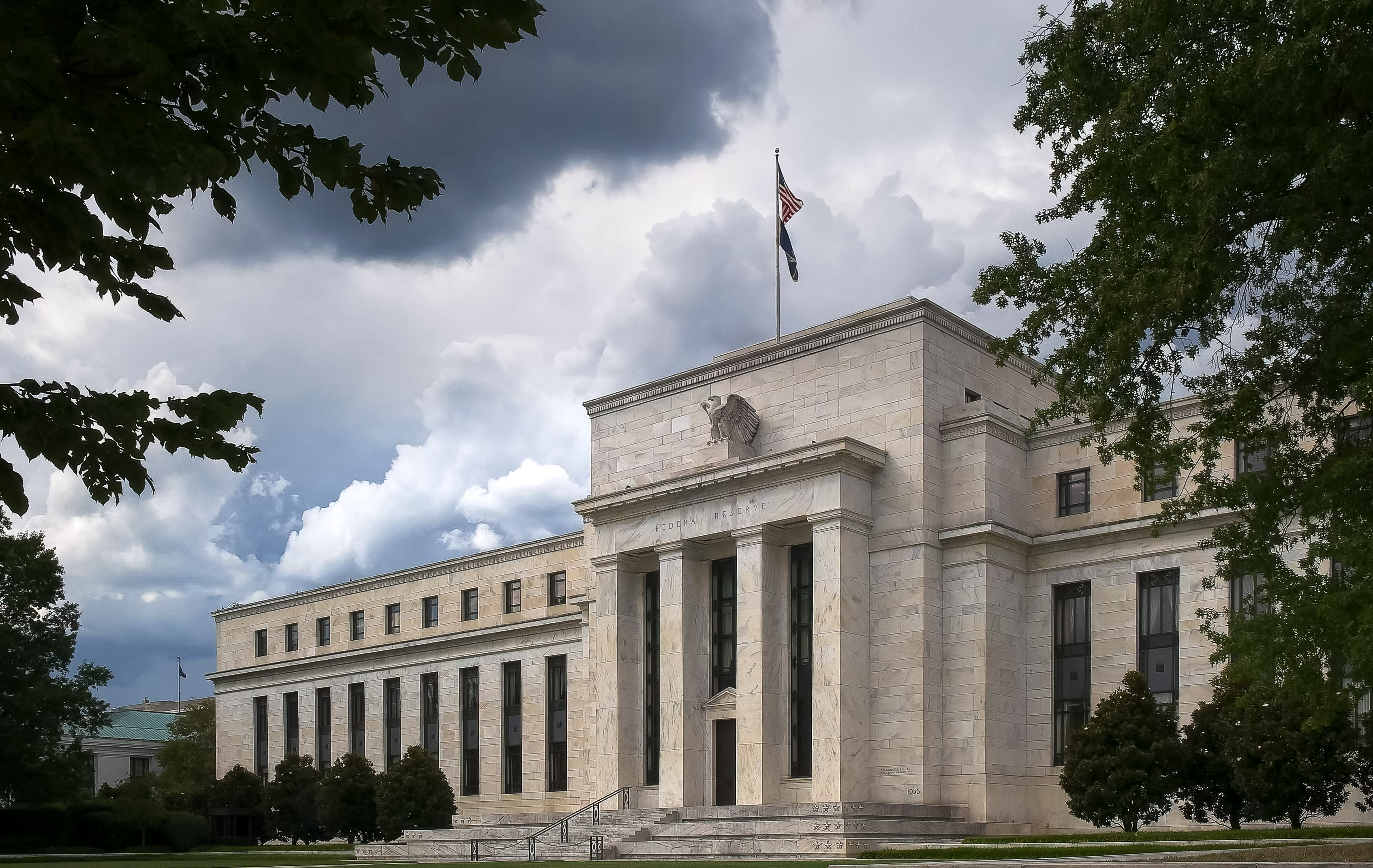How to Invest for Fall Rate Cuts by the Fed
The probability the Fed cuts interest rates by 25 basis points in October is now greater than 90%.


As was widely expected, the Federal Reserve cut its benchmark interest rate by 25 basis points at its September 16-17 meeting. And more rate cuts are coming, probably as soon as the next Fed meeting on October 28-29.
The Fed cut the target range for the federal funds rate to 4.00% to 4.25% because of deteriorating incoming labor market conditions, despite Bureau of Economic Analysis showing better-than-expected second-quarter GDP growth.
The government shutdown has stopped the flow of information from the Bureau of Labor Statistics, but reports from private sources continue to confirm a more difficult environment for workers and consumers.
From just $107.88 $24.99 for Kiplinger Personal Finance
Become a smarter, better informed investor. Subscribe from just $107.88 $24.99, plus get up to 4 Special Issues

Sign up for Kiplinger’s Free Newsletters
Profit and prosper with the best of expert advice on investing, taxes, retirement, personal finance and more - straight to your e-mail.
Profit and prosper with the best of expert advice - straight to your e-mail.
As of October 8, the CME Group's FedWatch tool – which tracks the implied probability of Fed moves based on 30-day fed funds futures – showed a 92.5% probability the Fed will cut by another 25 basis points, or 0.25%, later this month.
Still, inflation remains a major if not primary concern for Fed Chair Jerome Powell as President Donald Trump's tariffs and other policies work their way through the global economy.
Still, the target range for the fed funds rate is likely headed lower by the end of the year. So, what would lower interest rates mean for investors?
Let's break it down.
The Fed (usually) doesn't control long-term interest rates
The Fed's primary monetary policy tool is the federal funds rate – the interest rate at which commercial banks lend excess reserves to one another overnight.
When the Fed adjusts the target range for the fed funds rate, effects ripple across banks and through the economy.
The prime rate, which banks charge their most creditworthy customers, is closely tied to the fed funds rate. And most other loans – credit cards, small business loans, etc. – are priced as a spread above prime.
The Fed can also influence long-term interest rates by buying or selling longer-dated bonds, a strategy known as quantitative easing. But this is less common and generally reserved for emergency conditions, as in the 2008-09 Global Financial Crisis and again during COVID in 2020–21.
No significant bond-buying is expected this year.
What lower interest rates mean for bonds, savings accounts and other income investments
Lower short-term interest rates will likely lead to a steepening yield curve – short-term yields fall while long-term yields rise.
This typically happens because lower rates spur inflation expectations, pushing up long-term yields.
As a result, we can expect savings accounts, money market funds and Treasury bills to offer slightly lower yields.
And longer-term bonds, with maturities of 10 years to 30 years – may become marginally more attractive, potentially offering higher yields.
One important note: We probably won't see much of an effect on fixed-rate mortgages, as these tend to track longer-term interest rates.

How ETFs are doing during the second Trump administration
All else being equal, a more accommodative Fed is generally good for the stock market.
Lower interest rates stimulate economic growth, which boosts corporate earnings; reduce borrowing costs, which improves profit margins; and make stocks more attractive relative to fixed-income alternatives.
An investor might be content to sit in a money market fund yielding 5%. But if that yield drops to 3% or lower, they might be more inclined to take risk in the stock market in search of better returns.
As rates fall, money tends to flow into equities.
Which sectors benefit most from lower interest rates?
In a falling-interest-rate environment, growth stocks – particularly tech, small-caps and other companies dependent on expectations of future earnings – tend to benefit most. This happens for two reasons.
Capital is cheaper, and young, fast-growing companies often rely on external funding. Lower interest rates reduce their cost of capital.
And valuation math favors growth. Lower interest rates increase the present value of future profits, which boosts valuations for companies with long-term earnings potential.
Tech stocks and small-cap stocks as well as other high-growth sectors may get a tailwind when the Fed starts cutting interest rates again.
At the same time, interest rates aren't the only factor to consider when it comes to buying stocks.
The Fed typically cuts rates aggressively when economic conditions are weakening – and that can be bad for stocks overall.
Bottom line: Rate cuts are coming, eventually, and certain sectors may benefit. But stay diversified, manage your risk and don't blindly chase momentum.
Related content
Profit and prosper with the best of Kiplinger's advice on investing, taxes, retirement, personal finance and much more. Delivered daily. Enter your email in the box and click Sign Me Up.

Charles Lewis Sizemore, CFA is the Chief Investment Officer of Sizemore Capital Management LLC, a registered investment advisor based in Dallas, Texas, where he specializes in dividend-focused portfolios and in building alternative allocations with minimal correlation to the stock market.
-
 Metro by T-Mobile Is Giving Away This Samsung Galaxy A16: Which Plans Are Eligible?
Metro by T-Mobile Is Giving Away This Samsung Galaxy A16: Which Plans Are Eligible?Metro by T-Mobile is offering free Samsung Galaxy A16 phones on eligible plans right now. Here’s how the deal works.
-
 I Drive and Collect Classic Cars: Here’s How I Got Started
I Drive and Collect Classic Cars: Here’s How I Got StartedAre classic cars a hobby or an investment strategy — or both? Either way, the vintage car scene is much cooler and more affordable than you think.
-
 My First $1 Million: Retired Middle School Teacher, 68
My First $1 Million: Retired Middle School Teacher, 68Ever wonder how someone who's made a million dollars or more did it? Kiplinger's My First $1 Million series uncovers the answers.
-
 The $183,000 RMD Shock: Why Roth Conversions in Your 70s Can Be Risky
The $183,000 RMD Shock: Why Roth Conversions in Your 70s Can Be RiskyConverting retirement funds to a Roth is a smart strategy for many, but the older you are, the less time you have to recover the tax bite from the conversion.
-
 A Financial Pro Breaks Retirement Planning Into 5 Manageable Pieces
A Financial Pro Breaks Retirement Planning Into 5 Manageable PiecesThis retirement plan focuses on five key areas — income generation, tax management, asset withdrawals, planning for big expenses and health care, and legacy.
-
 4 Financial To-Dos to Finish 2025 Strong and Start 2026 on Solid Ground
4 Financial To-Dos to Finish 2025 Strong and Start 2026 on Solid GroundDon't overlook these important year-end check-ins. Missed opportunities and avoidable mistakes could end up costing you if you're not paying attention.
-
 Nasdaq Leads as Tech Stages Late-Week Comeback: Stock Market Today
Nasdaq Leads as Tech Stages Late-Week Comeback: Stock Market TodayOracle stock boosted the tech sector on Friday after the company became co-owner of TikTok's U.S. operations.
-
 Are You Putting Yourself Last? The Cost Could Be Your Retirement Security
Are You Putting Yourself Last? The Cost Could Be Your Retirement SecurityIf you're part of the sandwich generation, it's critical that you don't let the needs of your aging parents come at the expense of your future.
-
 I'm an Insurance Pro: It's Time to Prepare for Natural Disasters Like They Could Happen to You
I'm an Insurance Pro: It's Time to Prepare for Natural Disasters Like They Could Happen to YouYou can no longer have the mindset that "that won't happen here." Because it absolutely could. As we head into 2026, consider making a disaster plan.
-
 The Future of Philanthropy Is Female: How Women Will Lead a New Era in Charitable Giving
The Future of Philanthropy Is Female: How Women Will Lead a New Era in Charitable GivingWomen will soon be in charge of trillions in charitable capital, through divorce, inheritance and their own investments. Here's how to use your share for good.
-
 Cooler Inflation Supports a Relief Rally: Stock Market Today
Cooler Inflation Supports a Relief Rally: Stock Market TodayInvestors, traders and speculators welcome much-better-than-hoped-for core CPI data on top of optimism-renewing AI earnings.